The Role of Social Media in Small Business Marketing
In today’s digital age, social media has become a powerful tool for small businesses to enhance brand visibility and engage with customers. With billions of users actively participating on platforms like Facebook, Instagram, Twitter, LinkedIn, and more, social media provides an unparalleled opportunity for businesses to reach their target audience, build relationships, and drive growth. Here’s how small businesses can effectively leverage social media platforms for brand awareness and customer engagement.
![[object Object]](https://clipl-web1.sgp1.cdn.digitaloceanspaces.com/images/clu85letv00534irzg11i1avz.png)
1.Understanding the Importance of Social Media
- Increased Visibility: Social media platforms offer a vast audience, allowing small businesses to reach potential customers who might not be accessible through traditional marketing channels. By maintaining an active presence, you increase your brand’s visibility and recognition.
- Cost-Effective Marketing: Social media marketing is often more affordable compared to traditional advertising methods. With a strategic approach, you can achieve significant results without a substantial budget.
- Customer Insights: Social media provides valuable insights into customer preferences, behaviors, and feedback. Analyzing this data can help you tailor your marketing strategies to better meet customer needs.
2. Choosing the Right Platforms
- Know Your Audience: Different social media platforms attract different demographics. Choose platforms that align with your target audience. For example, LinkedIn is ideal for B2B marketing, while Instagram and TikTok are great for visual and younger audiences.
- Focus on Quality, Not Quantity: It’s more effective to focus on a few key platforms where your audience is most active rather than spreading yourself too thin across multiple platforms. Prioritize the platforms that will give you the best results.
![[object Object]](https://clipl-web1.sgp1.cdn.digitaloceanspaces.com/images/clu85g32c004p4irz90k4e9u5.png)
3. Creating a Social Media Strategy
- Set Clear Objectives: Define what you want to achieve with your social media efforts. Objectives could include increasing brand awareness, driving website traffic, generating leads, or improving customer engagement.
- Develop a Content Plan: Create a content calendar outlining the types of posts you’ll share, the frequency of updates, and the themes that align with your brand. Plan content that is engaging, informative, and relevant to your audience.
- Engage with Your Audience: Social media is a two-way street. Engage with your audience by responding to comments, messages, and reviews. Building relationships through genuine interactions fosters trust and loyalty.
4. Crafting Engaging Content
- Visual Content: Use high-quality images, videos, and infographics to capture attention and communicate your message effectively. Visual content is more likely to be shared and can significantly boost engagement.
- Consistent Branding: Ensure that your brand’s voice, tone, and visual elements are consistent across all social media platforms. Consistent branding helps reinforce your identity and build recognition.
- User-Generated Content: Encourage your customers to share their experiences with your brand. User-generated content, such as reviews, testimonials, and photos, can serve as authentic endorsements and increase credibility.
- Educational and Entertaining Posts: Share content that educates, entertains, or adds value to your audience’s lives. Tips, how-tos, and behind-the-scenes glimpses can keep your audience engaged and interested in your brand.
![[object Object]](https://clipl-web1.sgp1.cdn.digitaloceanspaces.com/images/clu85gvvd004t4irzgz1cbrbk.png)
5. Utilizing Paid Social Media Advertising
- Targeted Advertising: Social media platforms offer advanced targeting options that allow you to reach specific demographics based on factors such as location, age, interests, and behaviors. Utilize these targeting features to maximize the effectiveness of your ads.
- Ad Formats: Explore various ad formats available on social media platforms, including sponsored posts, carousel ads, video ads, and story ads. Choose formats that align with your campaign goals and resonate with your audience.
- Monitor and Optimize: Track the performance of your paid ads using analytics tools provided by social media platforms. Monitor key metrics such as engagement rates, click-through rates, and conversions, and adjust your strategies as needed to improve results.
6. Measuring Success and Adjusting Strategies
- Track Key Metrics: Use analytics tools to measure the success of your social media efforts. Key metrics to track include engagement (likes, comments, shares), reach, follower growth, website traffic, and conversion rates.
- Analyze Performance: Regularly review your social media performance to identify what’s working and what’s not. Analyzing data helps you understand audience preferences and adjust your strategies to better meet their needs.
- Iterate and Improve: Based on your performance analysis, make data-driven adjustments to your content, posting frequency, and engagement tactics. Continuously refining your approach helps optimize your social media marketing efforts.
Conclusion
Social media is a powerful tool for small businesses looking to enhance brand awareness and engage with customers. By understanding the importance of social media, choosing the right platforms, creating a strategic content plan, crafting engaging posts, utilizing paid advertising, and measuring success, small businesses can effectively leverage social media to drive growth and build strong relationships with their audience. For more insights on optimizing your social media strategy and to explore how CloudActive Labs India Pvt Ltd can support your marketing efforts, visit CloudActive Labs India Pvt Ltd or contact us at [email protected].























